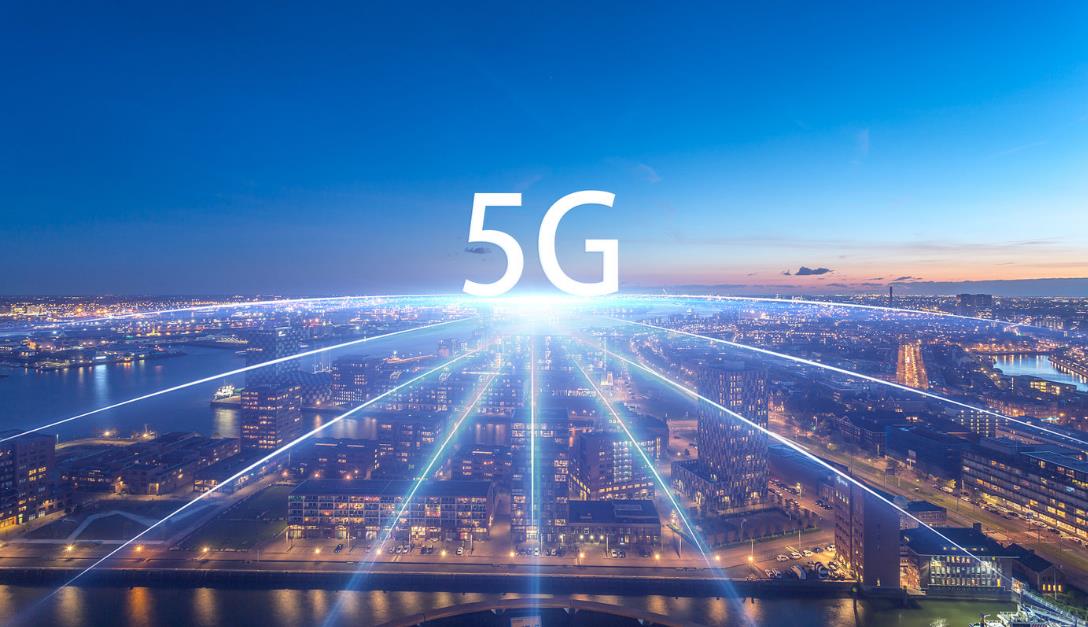5G refers to the 5th Generation Mobile Communication Technology, which is a new generation of broadband mobile communication technology characterized by high speed, low latency, and large connectivity. 5G communication infrastructure is the network infrastructure for realizing the interconnection of humans, machines, and things.
Mobile communication continues the development trend of one generation of technology every decade, and has gone through the development of 1G, 2G, 3G, and 4G. Every intergenerational transition and technological advancement has greatly promoted industrial upgrading and economic and social development. From 1G to 2G, the transition from analog communication to digital communication has been achieved, and mobile communication has entered millions of households; From 2G to 3G and 4G, it has realized the transformation from voice service to data service, and the transmission rate has increased hundreds of times, which has promoted the popularization and prosperity of mobile Internet applications. Currently, mobile networks have integrated into all aspects of social life, profoundly changing people's communication, interaction, and even the entire way of life. The 4G network has created a prosperous Internet economy and solved the problem of people to people communication anytime and anywhere. With the rapid development of mobile Internet, new services and new businesses continue to emerge, and the explosive growth of mobile data traffic, the 4G mobile communication system is difficult to meet the demand of the future mobile data traffic explosion, so it is urgent to develop the next generation mobile communication (5G) system.
As a new type of mobile communication network, 5G not only aims to solve the problem of human to human communication and provide users with more immersive ultimate business experiences such as augmented reality, virtual reality, and ultra high definition (3D) videos, but also needs to solve the communication problems between people and things, things and things, and meet the needs of IoT applications such as mobile healthcare, connected vehicles, smart homes, industrial control, and environmental monitoring. Ultimately, 5G will penetrate into various industries and fields of the economy and society, becoming a key new infrastructure supporting the digital, networked, and intelligent transformation of the economy and society.

What is 5G?
5G performance indicators
1. The peak rate needs to reach 10-20Gbit/s to meet the transmission of large amounts of data such as high-definition videos and virtual reality.
2. The air interface latency is as low as 1ms, meeting real-time applications such as autonomous driving and remote medical care.
3. With a device connectivity capability of millions of connections per square kilometer, it meets the communication needs of the Internet of Things.
4. Spectrum efficiency is more than three times higher than LTE.
Under continuous wide area coverage and high mobility, the user experience rate reaches 100Mbit/s.
6. The traffic density reaches 10Mbps/m2 or above.
7. Mobility supports high-speed movement at 500km/h.
Key Technologies of 5G Wireless
The 5G international technology standard focuses on meeting the flexible and diverse needs of the Internet of Things. On the basis of OFDMA and MIMO basic technologies, 5G adopts a flexible new system design to support three major application scenarios. In terms of frequency bands, unlike 4G which supports mid to low frequencies, considering the limited resources of mid to low frequencies, 5G supports both mid to low and high frequency bands. The mid to low frequencies meet coverage and capacity requirements, while the high frequencies meet the need to increase capacity in hotspot areas. 5G has designed a unified technological solution for both mid to low frequencies and high frequencies, and supports a basic bandwidth of 100 MHz. In order to support high-speed transmission and better coverage, 5G adopts LDPC, Polar new channel coding schemes, and more powerful large-scale antenna technology. In order to support low latency and high reliability, 5G adopts technologies such as short frames, fast echo, and multi-layer/multi station data retransmission.
Key Technologies of 5G Network
5G adopts a new service-oriented architecture, supporting flexible deployment and differentiated business scenarios. 5G adopts a fully service-oriented design, modular network functions, supports on-demand calling, and achieves functional reconstruction; Adopting a service-oriented description makes it easy to achieve capability openness, which is conducive to introducing IT development capabilities and unleashing network potential. 5G supports flexible deployment, based on NFV/SDN, achieving hardware and software decoupling, and separating control and forwarding; Adopting cloud based networking with a universal data center, flexible deployment of network functions, and efficient resource scheduling; Support edge computing, cloud computing platform sinks to the edge of the network, and supports flexible selection of application based gateways and edge diffluence. By using network slicing to meet the differentiated needs of 5G, network slicing refers to extracting specific features and functions from a network and customizing a logically independent network. It enables operators to deploy multiple logical networks with different functions and services to serve their respective target users. Three types of network slicing are defined, namely enhanced mobile broadband, low latency and high reliability, and large connectivity to the Internet of Things.
In the 5G era, big data, Internet of Things, artificial intelligence, edge computing and other information technologies will naturally develop in concert with 5G, which will bring disruptive changes to all walks of life, spawn many new fields and industries, and accelerate the transformation, upgrading, replacement and empowerment of traditional industries. Technologies such as 4K, 8K ultra high definition video, AR augmented reality, VR immersive experience, etc. will be widely applied in many fields such as gaming, media, education, sales, entertainment, etc.